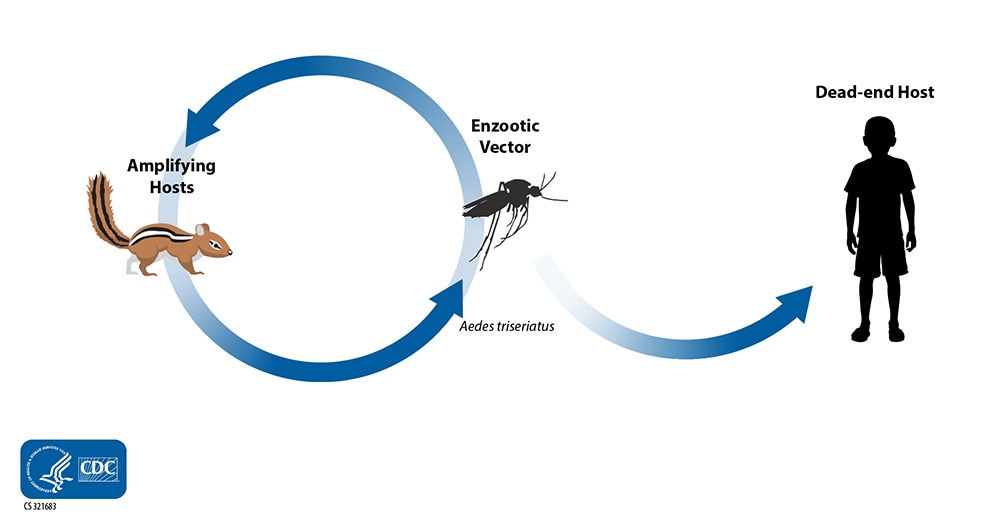Transmission

La Crosse (LAC) virus is spread to people by the bite of an infected mosquito. Mosquitoes become infected when they feed on small mammals such as chipmunks and squirrels. The principle vector for LAC virus is Aedes triseriatus (the eastern treehole mosquito), found in deciduous forest habitats (i.e., forests with trees that lose their leaves each year). People do not develop high enough levels of the virus in their blood to infect mosquitoes. As a result, people are considered “dead-end” hosts for LAC virus.
Ae. triseriatus is an aggressive daytime-biting mosquito, especially in or near woods with infected mosquitoes. Ae. triseriatus normally lays its eggs in standing water collected in tree holes, but it will also lay eggs in containers with standing water, particularly discarded tires. LAC virus is passed from the female mosquito to the eggs she lays. The virus can survive in dormant eggs through the winter and develop into infected, adult mosquitoes in the spring.
LAC virus is not spread by coughing, sneezing, touching, or other contact with someone who is infected.